| As you read descriptions on Ebay, Discogs or Swedish Tradera there is a lot of words used, so let’s sort of the terminology! I would also take the opportunity to add translations for the Swedish readers. Let’s start with the record:
Hairlines (Swedish – ytrepor) are very faint scratches. On NM records they origin from either bad paper quality of the inner sleeve or caused by record has been placed on another surface and rubbed against it. Hairlines should not be noticeable when the record is played.
Scuffs (Swedish – märken) are handling damages like paper scuffs as the record is pushed into the sleeve or similar.
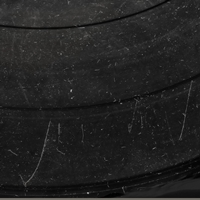 Scratches (Swedish – repor) break in the grooves and they can be felt with your finger nail. A scratch will create a click or a pop as you play the record. The origin of scratches is from the needle of the turntable or bad handling like where the record has been on contact with a sharp or rough surface. It should be noted that records graded above VG+ cannot have any scratches. Really bad scratches will the record to skip (Swedish – hack), those records are in the junk-grading category. Scratches (Swedish – repor) break in the grooves and they can be felt with your finger nail. A scratch will create a click or a pop as you play the record. The origin of scratches is from the needle of the turntable or bad handling like where the record has been on contact with a sharp or rough surface. It should be noted that records graded above VG+ cannot have any scratches. Really bad scratches will the record to skip (Swedish – hack), those records are in the junk-grading category.
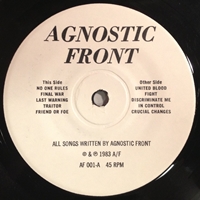 Spindle marks (Swedish – ????) are flaws related to putting the record on the spindle. It could be small marks around the center hole or even on the label as the record has not been put on the spindle correctly (for new records). Spindle marks (Swedish – ????) are flaws related to putting the record on the spindle. It could be small marks around the center hole or even on the label as the record has not been put on the spindle correctly (for new records).
Audio defects like pops (related to a tiny damage on the surface) and repeating clicks (Swedish – Knäpp) are really turn-offs for many collectors and will command a grading of VG or lower. Surface noise (Swedish – brus, knaster) comes from grove wear (Swedish – spårslitage) either by just playing the record too many times or the use of a bad needle, turn-table settings or playing dirty / dusty records. On VG records these surface noise is more evident on the silent part. However – some people mix up static electricity with surface noise. This noise can be removed by swiping the record with an anti-static brush.
So that was the records, some words about the sleeve;
Reading the ads there are many words used like crease, wrinkles, fraying, stains, tears, seam wear, seam split and ring wear. These terms might be clear for someone having English as their first language but far more challenging for others.
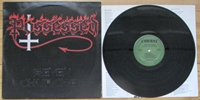 Ring wear (Swedish – Ringmärke efter skivan) is the circle on the sleeve from the record that is stored inside the sleeve. Records that are stacked on each other will get this problem faster than records stored vertically. I keep the record and the inner sleeve behind the sleeve to avoid any risk to get ring wear on the sleeve. Ring wear (Swedish – Ringmärke efter skivan) is the circle on the sleeve from the record that is stored inside the sleeve. Records that are stacked on each other will get this problem faster than records stored vertically. I keep the record and the inner sleeve behind the sleeve to avoid any risk to get ring wear on the sleeve.
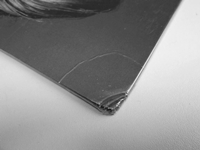 A Dent (Swedish – stötmärke) are found in the corner of the record whilst a crease (Swedish – veck) comes from a bent or folded area. Both of them can be seen on the image to the left. Wrinkles and Puckers (Swedish – Rynkor) are more serious damages than small creases. A Tear (Swedish – Reva) refer to the paper having been torn. A Dent (Swedish – stötmärke) are found in the corner of the record whilst a crease (Swedish – veck) comes from a bent or folded area. Both of them can be seen on the image to the left. Wrinkles and Puckers (Swedish – Rynkor) are more serious damages than small creases. A Tear (Swedish – Reva) refer to the paper having been torn.
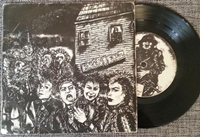
A Fraying (Swedish – Slitna ställen, fransar) is a worn area. The image to the left show severe fraying all around the cover. For the higher grading they typical appear on the corners only.
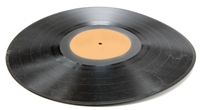 A disc which is warped (Swedish – skeva) came from a bad pressing but it could also have been exposed to high temperature during storage. It’s said there are some miracle methods to get them fixed. I have however never met anyone who seems to have fixed a warped record / disc. Just slightly wraped records can be in the VG+ category (if it good otherwise), whilst severe warping will give the record a junk grading. A disc which is warped (Swedish – skeva) came from a bad pressing but it could also have been exposed to high temperature during storage. It’s said there are some miracle methods to get them fixed. I have however never met anyone who seems to have fixed a warped record / disc. Just slightly wraped records can be in the VG+ category (if it good otherwise), whilst severe warping will give the record a junk grading.
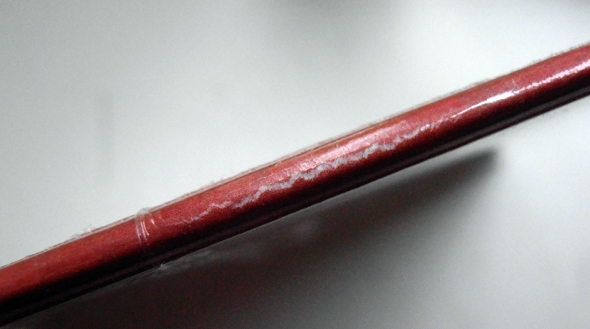 And finally we got Seam wear and Seam splits (Swedish – skador resp hål i sömmen/kanten). These damages are created by the record inside of the sleeve. Seam damages are the main reason you should ask any seller to ship the record separated from the sleeve. Okay – that was my 5 cents on grading and vocabulary. And finally we got Seam wear and Seam splits (Swedish – skador resp hål i sömmen/kanten). These damages are created by the record inside of the sleeve. Seam damages are the main reason you should ask any seller to ship the record separated from the sleeve. Okay – that was my 5 cents on grading and vocabulary.
|


Hey, just wanted to say that I really appreciated this info. I’ve had a hard time with the english terminology over at Discogs. Thanks!
Great that it was helpful!
Speaking of a warped record – there is a possibility!
You can ‘iron’ the record – the method is similar to the operation mode of a waffle iron.
E.g., here you can see the machine used for this routine: http://www.audiophile-vinyl.de/Unser-Service/Schallplatten-buegeln.htm?SessionId=&a=catalog&p=7
It’s not cheap (around 9 or 10 Euros for one record), but I tried this for a few of warped 12″ records (not sure about 7″ records!) and to my surprise it worked and I could listen to them without any problems after the routine.